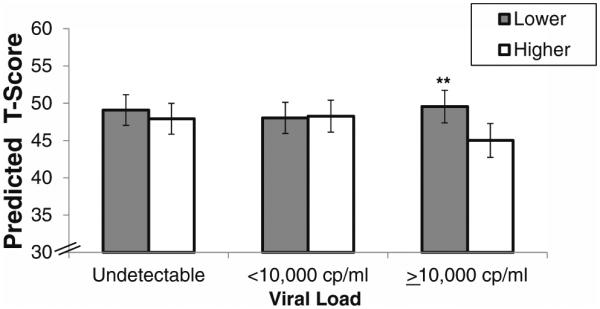Fig. 2.

The interactive association between perceived stress (lower vs. higher) and viral load on the verbal memory domain in HIV-infected women. Note. **p<0.01. There was a significant interaction between perceived stress and viral load on the verbal memory domain (p=0.04). Among HIV-infected women with viral loads ≥10,000 cp/ml, those women with higher perceived stress performed significantly worse than women with lower perceived stress (B=−4.54, SE=1.61, p < 0.01). HIV-infected women with higher and lower perceived stress performed similarly if their viral loads were <10,000 cp/ml (B=0.23, SE=1.13, p=0.84) or undetectable (B=−1.17, SE=0.93, p=0.21). The model is adjusted for marijuana use; crack, cocaine, and/or heroin use; smoking; hazardous alcohol use; antidepressants; HCV; income; study site; number of exposures to the Hopkins Verbal Learning Test; recent CD4 count and viral load; nadir CD4 count; and cART use and adherence
